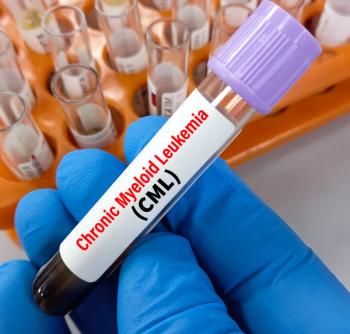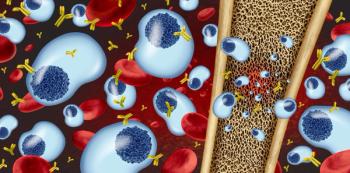
Pharmacy Practice in Focus: Oncology
- May 2015
- Volume 2
- Issue 2
Adherence-Aiding Solutions: Scalable, Meaningful, and Affordable
Health care organizations harness technology in their quest to boost medication adherence.
Health care organizations harness technology in their quest to boost medication adherence.
Poor medication adherence is a major public health problem. The World Health Organization has noted that increases in adherence intervention effectiveness could in fact have a far greater positive effect on population health than improvements in specific medical treatments.1
Let’s face it, presenting your patients with a bag full of prescription vials and printed medication leaflets will not cut it this new health care economy. Patients (start thinking of them as consumers), providers, and payers demand new, nontraditional solutions to meet their health care needs. Add to this the great strides that have been made in technology and we have an environment rich in opportunity to create new standards of care that will meaningfully impact adherence.
Adherence, Why Now?
There are several reasons why more attention has been focused on medication adherence in the wake of health care reform:
- Changing reimbursement models. Traditional health care is shrinking. The goal of keeping populations healthy is increasingly aligned with evolving reimbursement models. The days of thriving in a fee-for-service world are quickly coming to a close. Instead of the prescription being the economic unit of measure, the outcome will be the new commodity.
- Need to manage risk. The transformation to accountable care is requiring health care organizations to manage total health care costs in the populations they serve. This is a blurring of the line between medical and prescription benefits, and it places a premium on reducing overall health care utilization. With more than 80% of health care dollars spent on chronic conditions2 and more than 70% of office visits resulting in a prescription,3 possessing a well-developed adherence platform is a necessity. Developing and implementing new scalable adherence solutions in an effective manner will be required. If you can’t manage medications, you can’t manage financial risk in a post health care— reform world.
- Consumerism. Health care is shifting from business-to-business transactions to business-to-consumer transactions. High-deductible plans, choice-oriented benefits, and patient-focused service elements are moving the foundation of competition from reputation to value. As patients increasingly seek value, they will align with organizations that provide tools and solutions to help them achieve their health goals and provide an exceptional customer experience. Patients will have increased access to ratings, quality measures, and costs, which will all provide transparency to make value-based decisions. Ultimately, the consumer will be the new boss, and if you aren’t moving in a direction to add value to your patients, your competitors will.
- Financial Viability. The new business environment of health care is here. There is a need to build out a population health infrastructure that includes a scalable adherence platform. This will position an organization to maximize reimbursement, manage risk, provide patient-centric offerings, and capitalize on growth opportunities.
Adherence-Aiding Solutions
Nonadherence is a multifaceted problem, and addressing it is an essential part of population health management. Leveraging technology to overcome human limitations will offer opportunities to improve outcomes in larger patient populations more efficiently, safely, and quickly. Developing an adherence platform by combining valuable adherence-aiding components will allow for a thoughtful progression in the quest to provide comprehensive medication management to the populations you serve.
Components of adherence platforms will differ from organization to organization and depend on each individual organization’s structure, goals, partnerships, and level of vertical integration. Adherence-aiding solutions include:
- Adherence packaging
- Packaging automation
- Medication synchronization
- Medication therapy management (MTM)
- Adherence tracking/ verification
- Patient stratification
- Medication reconciliation
- Medication pass alerts
- Clinical decision support
- Clinician/physician/patient communication
- Benefit design management and feedback
- Interoperability with hospital information systems
- Prior authorization
- Refill management/optimization
Some of the components listed have more developed technological solutions than others. Organizations can begin this journey in a crawl, walk, or run fashion, implementing systems that are manual, semi-automated, or fully automated.
Not all patient populations will derive the same benefit from every adherence component, but a component may nonetheless be desired due to consumer appeal or specific organizational goals. Stratification of patient populations and choice of inclusion criteria will be important to maximize benefit as an organization scales.
Executing and scaling the components of an adherence platform will be a new endeavor for many organizations. Take comfort in the fact there are oceans of data that correlate increased clinical quality and reduced total health care costs to adherence. To those who have an extreme case of data dependency, remember this: data only tell us about the past; to be innovative, you need to continually create your own data while moving forward. Mitigate your risk by increasing your level of commitment to improvement. By neglecting to change what doesn’t work, you are actually accepting more risk.
Technology has already given us fully automated adherence packing solutions that allow pharmacies to reach thousands of patients, and MTM platforms that identify eligible patients, provide clinical support, and manage the process. Tomorrow has 1 guarantee: it will be different from today. Embrace the opportunity and create the future.
Troy Hilsenroth, RPh, MHA, MBA, EMT-P, is the vice president and general manager of the non-acute care division of Omnicell. He is responsible for leading the execution and market development of a national division focused on non-acute care environments.
References
- World Health Organization. Sabaté E, ed. Adherence to Long-Term Therapies: Evidence for Action. Geneva, Switzerland: World Health Organization; 2003. http://whqlibdoc.who.int/publications/2003/9241545992.pdf.
- Robert Wood Johnson Foundation. Chronic Care: Making the Case for Ongoing Care. Princeton, NJ: Robert Wood Johnson Foundation; 2010. www.rwjf.org/content/dam/farm/reports/reports/2010/rwjf54583. Accessed December 23, 2013.
- Centers for Disease Control and Prevention. National Ambulatory Medical Care Survey: 2010 Summary Tables. CDC website. www.cdc.gov/nchs/data/ahcd/namcs_summary/2010_namcs_web_tables.pdf.
Articles in this issue
over 10 years ago
Insulin Pens: Improving Adherence and Reducing Costsover 10 years ago
Scheduling Good Health: Pharmacists as Primary Immunizersover 10 years ago
Price vs Patient Access: Specialty's Unsettling Conundrumover 10 years ago
Kitchen Table Consults: Shifting the Point of Careover 10 years ago
The Appointment-Based Model: A Catalyst for Expansion of Servicesover 10 years ago
Patient Nonadherence: A Symptom, Not a Disease Stateover 10 years ago
Patient Understanding: The Cornerstone of Medication Adherenceover 10 years ago
Pharmacy Work Flow: Improving EfficiencyNewsletter
Stay informed on drug updates, treatment guidelines, and pharmacy practice trends—subscribe to Pharmacy Times for weekly clinical insights.























































































































































































































